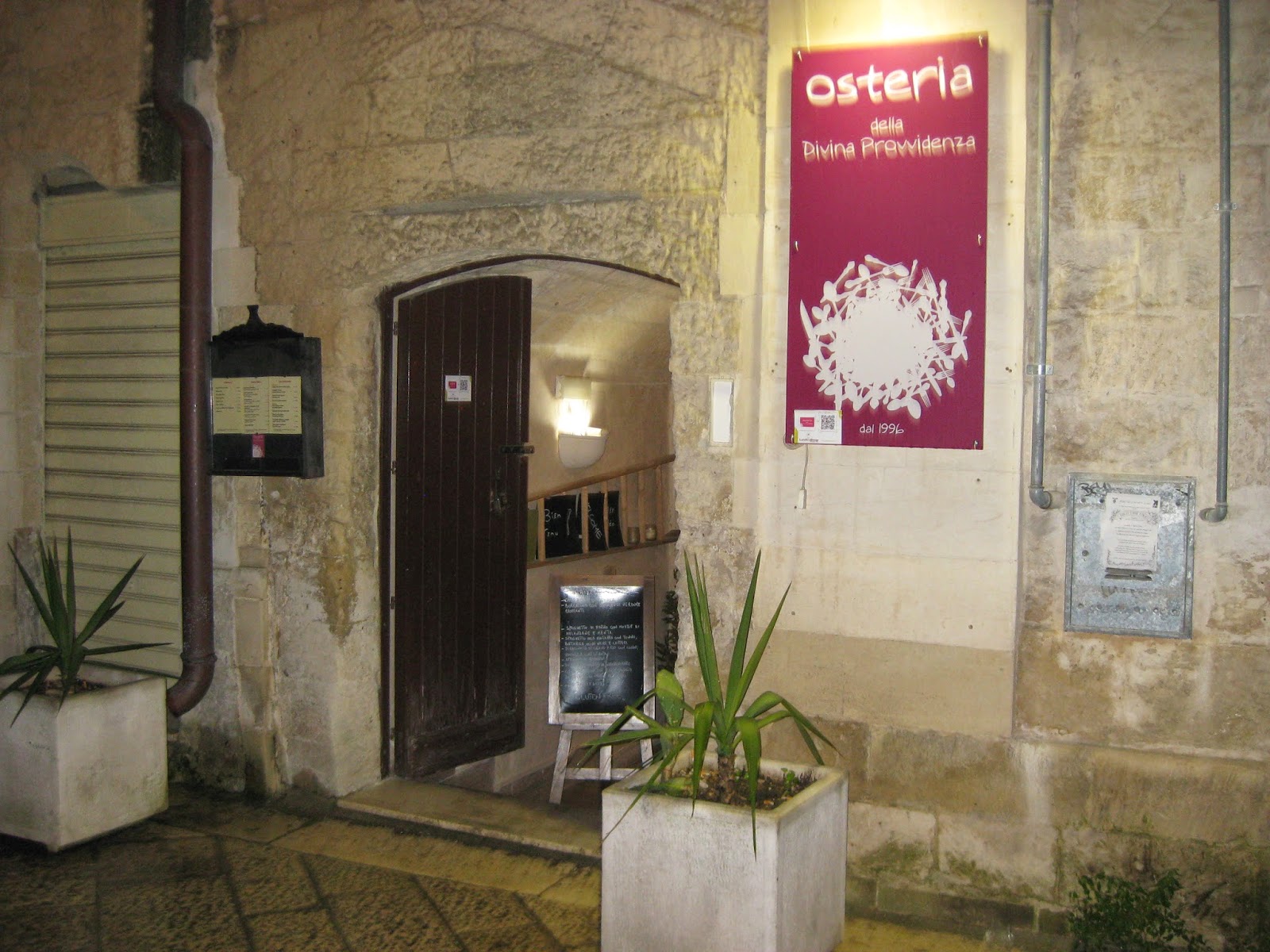Our goal was to explore one of the more remote parts of the country, i.e., the "heel" of the Italian "boot" in general and the Salentina peninsula in particular, and then the "instep" region of Basilicata. Much like Sicily, through the centuries this area fell under different influences of conquering countries in no small part because of its rich agriculture. Even today it produces most of the wheat used in making pasta in Italy, huge quantities of olive oil, and several powerful wines (Primitivo, Negroamaro).
After settling into our B&B, the Volver, which sits just outside the town wall, we headed out for a first walk of discovery, a welcome glass of prosecco and a bowl of tarallis, the local cracker specialty often seasoned with fennel seed or pepperoncini.
The B&B was cute, if a bit rustic, but they did serve a lovely breakfast on our terrace. So after fortifying ourselves on our first morning we set out to discover the Roman/Norman/Baroque city of Lecce.
 |
| Lecce's Roman Anfiteatro |
 |
| Lecce's Roman teatro |
Lecce is nicknamed "the Baroque Florence" because of its profusion of incredibly decorative buildings. Prominent and prosperous under the Romans and the Normans (Puglia, like Sicily, was the breadbasket of the time), many Greek, Roman, and Norman structures are still present and standing throughout Puglia.
Lecce's greatest splendor came between the 16th and 18th centuries when the town was embellished with Renaissance, Rococo and Baroque monuments. The local limestone gives the buildings a warm, lovely hue. While time and the environment has worn away many details, the carvings are still beautiful!
The Basilica of Santa Croce is sumptuously decorated with truly amazing ornamentation as are many of the smaller buildings throughout the town. The following photos are just a small sample of the incredible carvings, some whimsical and some grotesque, and unusual designs of the buildings of Lecce.
Food and Wine
We had heard a great deal about the food and wines from the region of Puglia and had greatly anticipated savoring many of the local specialties. In truth, we were a bit disappointed in some dishes, which involved involved heavy doses of tomato-based or fava bean-based sauces (definitely not the Tuscan way) and rather heavy orecchietti (little ears) pasta. We did sample many of the local dishes at breakfast, lunch and dinner and enjoyed them thoroughly.
For breakfast the local pastry is called a pasticciotto -- deadly with a cappuccino. It is a cake like dense pastry filled with a "crema pasticciera" and served slightly warm. The only problem is that one is tempted to gobble down about six of them, but they are so rich that it would probably be impossible to get up from the table after just two!
At lunchtime in a cafe by the Roman anfiteatro we sampled other specialties: pastries filled with spinach (a rustica), tomatoes and cheese, and stuffed balls of rice (arancinis also found in Sicily).
Also at lunch Lee discovered a local coffee specialty, the "espressino". Careful analysis (i.e., a brief chat with locals) suggested that it was something like a mini cappuccino (since Italians are not supposed to drink cappuccino after 11 am, this may be a face-saving way to get around this food rule).
Dinner at the Osteria della Divina Providenza treated us to a wonderful seafood dinner in a warm, stone setting. The local wines, such as Primitivo (the best being from the area around Manduria) and Salice Salentino (based on the negroamaro grape) are big powerful reds, and are justly famous.
But for our seafood based meal we opted for a fruity "rosato" (rosé) made from the primitivo grape. The term "primitivo" by the way, does not refer to a rough or raw character, but rather to the fact that is is an early-maturing (hence "primitivo") grape. It is, in fact, the same grape - albeit with a different name - used in making California's Zinfandels.















No comments:
Post a Comment